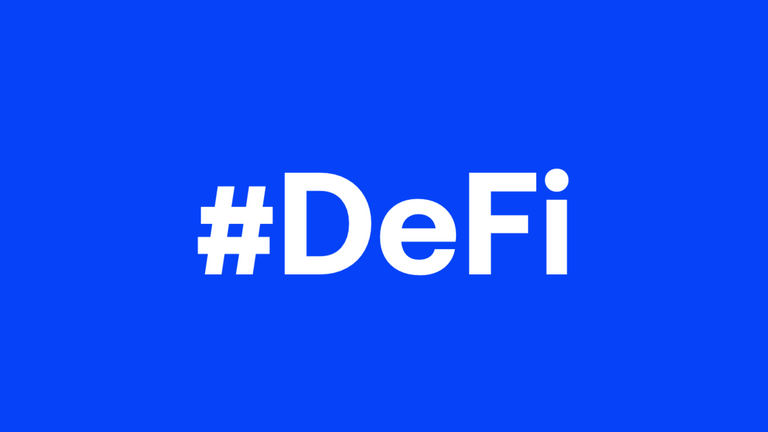The 2017 bull run had one word making the waves –bitcoin. Sweeping into the digital asset market; bitcoin and its system offered mouth-watering opportunities to investors including flashes of a new global system. If you lived actively on the internet during this time, ‘bitcoin’ is a word you hear twice for every minute you spend on the internet. Not certain you bought some bitcoins during this time, but I believe you ‘nearly’ did.
Past the 2017 historic, bitcoin has retained the ‘alpha’ statue in the crypto space despite many other similar and arguably enhanced projects making their way into the space too. Well, it still tops the charts but unlike the 2017 era and some years after it, a relatively new concept has taken over the space. You guessed it right – DEFI.
An average enthusiast in the crypto space stumbles on the acronym ‘DeFi’ twice per hour, at least. No doubt, my statistics is right…or very close to it. You get to hear the term DeFi twice as often as you hear Bitcoin, and even Ether on whose blockchain most DeFi projects run. Thanks to the enticing opportunities DeFi presents, the attention of many mainstream financial institutions is being drawn to the crypto space as DeFi is set to infiltrate mainstream financial procedures. I heard some say “pull down the banks”; not so soon anyways.
Decentralized financial system (DeFi) is an audacious move to decentralize core financial activities such as financial management, payment, investment, lending, and insurance. DeFi is a blockchain notion, it encompasses every attempt by blockchain and cryptocurrency projects to create a decentralized replacement or alternatives to real life financial activities.
From the bitcoin blockchain itself and its lightning network to decentralized exchanges and financial institutions built on the blockchain; blockchain technology have dived deep into the economic sector and is making attempts to create a new and better way of handling financial activities.
Decentralized financial systems comprises applications built on top of blockchains which facilitates permissionless financial services and provides a seamless option for running financial activities. DeFi hopes to introduce the core virtues of blockchain technology to the financial system.
DeFi projects are expanding the scope of financial systems, shifting the paradigm from ‘portable means’ of payments to smart contract applications running independently on a parent blockchain and offering advanced financial services such as insurance, lending, wealth management and an array of other financial management using blockchain resources and exhibiting desired blockchain features such immutability, security, privacy, speed and interoperability.
DeFi projects utilize the smart contract technologies to tokenize their service and offer blockchain-level security and utility to their platform users. Smart contract blockchains are hence home to DeFi projects. ethereum blockchain particularly has housed majority of DeFi projects. Augur, one of the earliest smart contract projects on the ethereum blockchain and a popular DeFi project offers a decentralized alternative to advanced financial instruments such as index trackers and futures. Stable coin; DAI(SAI) runs the ethereum blockchain and provides a decentralized alternative to relatively stable currencies. EOS blockchain, binance smart chain and the TRON blockchain smart contract layers also facilitates DeFi and provides resources which allows the project to build their solutions.
Amongst the numerous enticing features of decentralized finance projects, ‘yield farming’ has gained its place as the most exciting prospect of decentralized financial systems. The idea of leveraging DeFi protocols to generate interest returns of up to 10% of your initial investment per annum and a couple of other benefits will surely impress any investor. Due to this, DeFi presents an enticing opportunity for mainstream investors to dive into the crypto space—a major cause of the recent boom in DeFi projects.
DeFi projects are running riot, starting off in the second quarter of the year and extending their space trip to the third quarter of the year, unarguably the best performing crypto assets for the year. Bitcoin maximalist surely have some regrets there and for some reason they are reassessing their orientation of what a ‘shitcoin’ is and how they missed out on that run. I guess a couple of them were able to let go of their ego and shop the market for some ‘yield farmers token’.
Yield farming allows users to earn high rate interests by locking their assets on a Defi platform. Earning governance tokens of these platforms are also added gains from locking assets on a DeFi platform. According to DeFi Pulse, there is over $1.9 billion in crypto assets locked in DeFi right now. Locking assets on a defi platform allows users gain annualized income from the locked asset. The value of tokens locked in defi projects have skyrocketed over the past couple of months. Governance tokens issued by these platforms allows holders take part in decision making process of these projects.
Recent statistics have shown a steep rise in the number of tokens locked on the blockchain as a part of the requirements to create smart contracts, this rise gives an insight on the rate of proliferation of DeFi projects. even without this evidence, decentralized financial systems are on the rise as the traditional systems have steady exhibited some level of incompetence.
Well, Defi does come with its own drawbacks, majorly security issues. Currently, there are only little regulations in the Defi space. Defi itself is a relatively new concept still going through its initial period of growth and development. Scams have marred this concept and numerous shady startups have grown under the guise of defi. However, this doesn’t seem to slow down the speed at which these projects grow in number, popularity and value.
If we had to go by value, bitcoin is Currently not the most valuable asset in the crypto space in terms of worth per token. If you are reading this article then you probably know the new guy at the top, well, for the sake of knowledge, you’ll have to cough out over $15,000 for one full yearn finance token; Bit20 and NANOX trades at a higher price anyways, but I’m certain you’ll have no need for them, at least not like you would for a yearn finance token.
Notable decentralized exchanges have shone light on what it feels like trading cryptocurrencies on decentralized feels like, amazing!—I guess you said that too!, escaping the hassles of copying hot wallet addresses and memos to enable the tracking of the deposits and also to ensure that they are correctly channeled to your personal profile on the exchange.

DeFi offers a decentralized way of performing financial activities in contrast to centralized traditional financial institutions. Source
Defi has thrown some light on how better the global finance systems could work if things were decentralized and you wouldn’t have to fill identification papers before borrowing money from the bank. No hiding the fact that it is still a ‘baby concept’ and would need a lot of time to develop and offset its current risks and demerits.

